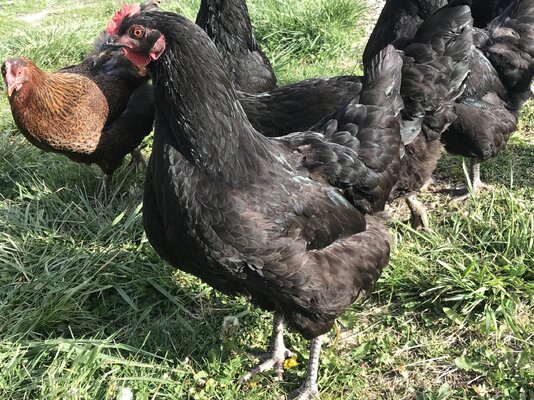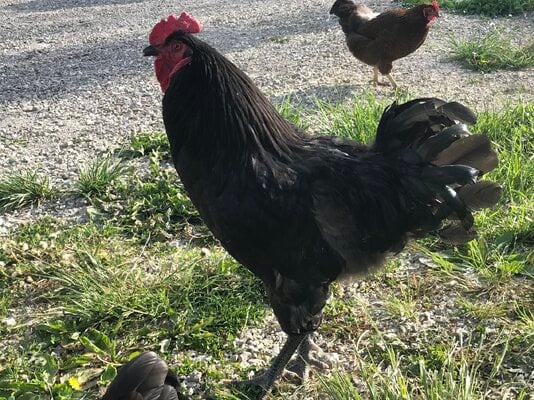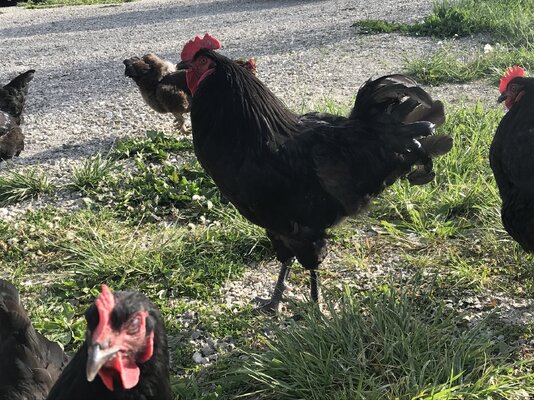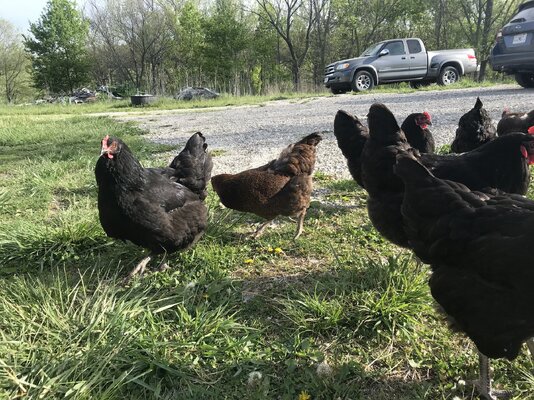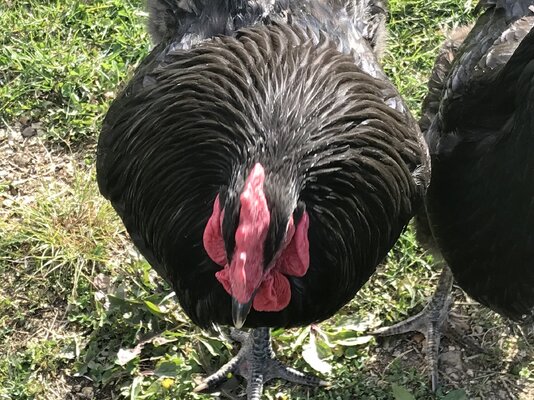- Thread starter
- #11
Navigation
Install the app
How to install the app on iOS
Follow along with the video below to see how to install our site as a web app on your home screen.
Note: This feature may not be available in some browsers.
More options
You are using an out of date browser. It may not display this or other websites correctly.
You should upgrade or use an alternative browser.
You should upgrade or use an alternative browser.
Will these gray chicks keep their color? BA roo Partridge Rock hens.
- Thread starter la dee da
- Start date
-
- Tags
- australorp chicks gray partridge
- Thread starter
- #12
- Thread starter
- #13
Hmmm this is a mystery lol
- Thread starter
- #15
Yeah, I was asking about the breed because Orpingtons are the only breed I've seen sold as split to lavender and wondered if this could have been a lucky TSC accident. Since they're from Sandhill, I've got no clue on where the color came from.
It would be really cool if you ended up with some birds from a Lavender Australorp project. The only other explanation I thought of would be a Lavender Orpington rooster did some fence hopping there. They are close enough to Australorps (white skin, looser feathering, and single comb) that the offspring would pass as black Australorps easily.
Pretty confident the color isn't from Partridge Rocks, since they shouldn't have any genes to cause it. For some reason, my brain went partridge=plymouth when first reading this and I immediately thought all offspring were Australorps since there are no head spots from barred mothers. The only difference between the Rock crosses and the Australorps would be leakage once they are older.
Also, a bit of a random request. There's a few chicks with very white heads in the picture, could you update on those too? They have more white than I would typically expect on an extended black chick so I was curious to see how they'd grow out. Probably they'll just be normal blacks and lavenders, but they're just different enough for me to wonder if there's something else going on as well.
It would be really cool if you ended up with some birds from a Lavender Australorp project. The only other explanation I thought of would be a Lavender Orpington rooster did some fence hopping there. They are close enough to Australorps (white skin, looser feathering, and single comb) that the offspring would pass as black Australorps easily.
Pretty confident the color isn't from Partridge Rocks, since they shouldn't have any genes to cause it. For some reason, my brain went partridge=plymouth when first reading this and I immediately thought all offspring were Australorps since there are no head spots from barred mothers. The only difference between the Rock crosses and the Australorps would be leakage once they are older.
Also, a bit of a random request. There's a few chicks with very white heads in the picture, could you update on those too? They have more white than I would typically expect on an extended black chick so I was curious to see how they'd grow out. Probably they'll just be normal blacks and lavenders, but they're just different enough for me to wonder if there's something else going on as well.
- Thread starter
- #17
I hadn’t even realized that the black and white chicks could be odd. Their parents also had black and white along with the black and yellow (I looked back at last year’s pictures to confirm it). Could the black and white ones be the parents of the lavender/gray chicks? I took some more pics of this year’s chicks, though my camera couldn’t get too accurate with the colors (the chick with an all-yellow head sometimes looks white). I’ll post the pics once they upload.
- Thread starter
- #18
The lighting changed because I used an LED flashlight to try to get more accurate colors.
Attachments
-
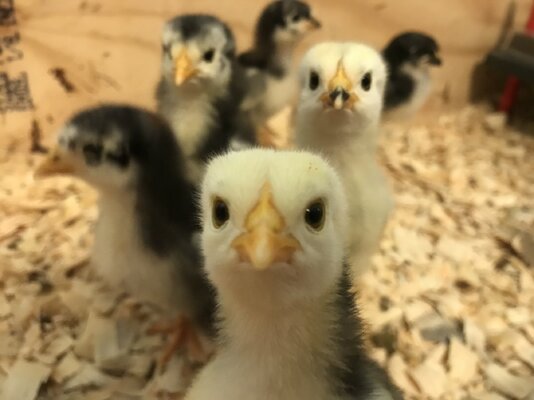 IMG_5449.jpeg287.7 KB · Views: 8
IMG_5449.jpeg287.7 KB · Views: 8 -
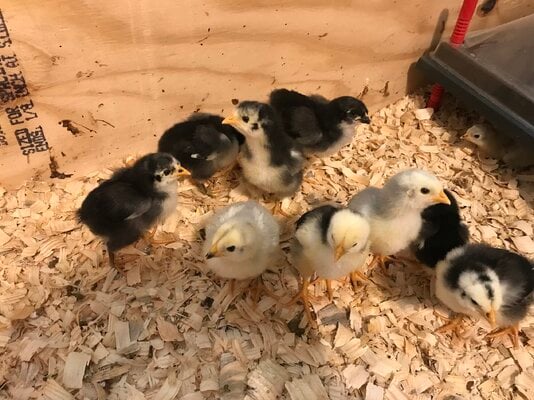 IMG_5448.jpeg540 KB · Views: 7
IMG_5448.jpeg540 KB · Views: 7 -
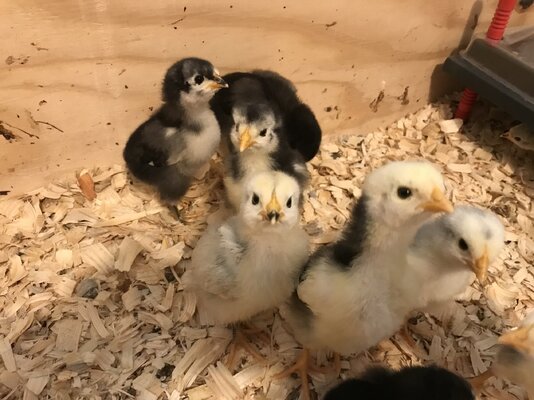 IMG_5447.jpeg410 KB · Views: 8
IMG_5447.jpeg410 KB · Views: 8 -
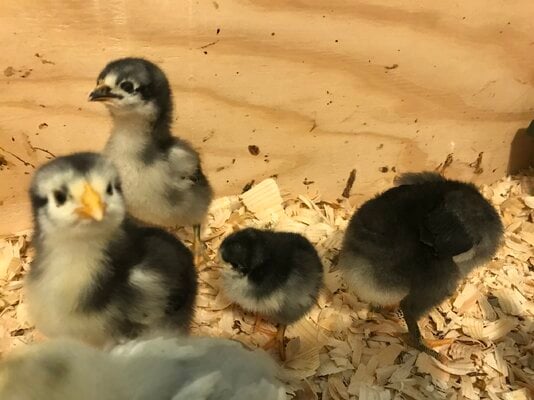 IMG_5451.jpeg352.3 KB · Views: 8
IMG_5451.jpeg352.3 KB · Views: 8 -
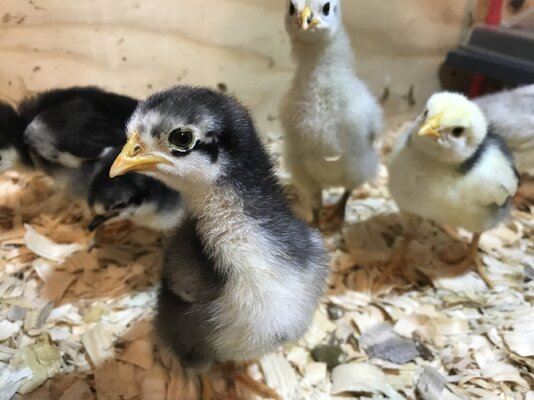 IMG_5452.jpeg359.3 KB · Views: 8
IMG_5452.jpeg359.3 KB · Views: 8 -
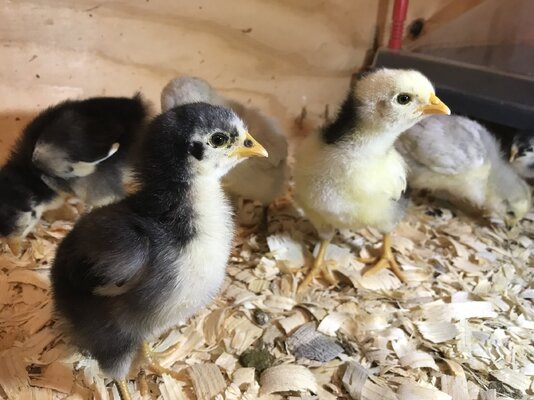 IMG_5453.jpeg408.9 KB · Views: 7
IMG_5453.jpeg408.9 KB · Views: 7 -
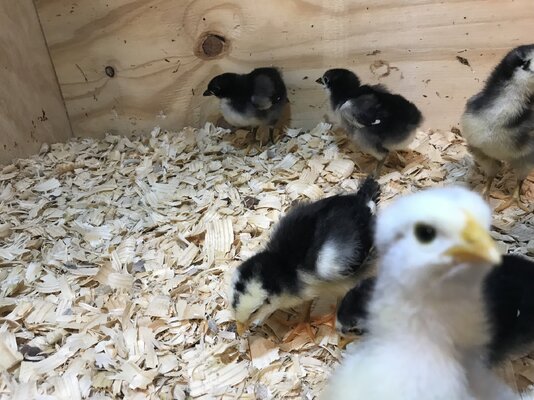 IMG_5454.jpeg530.9 KB · Views: 6
IMG_5454.jpeg530.9 KB · Views: 6 -
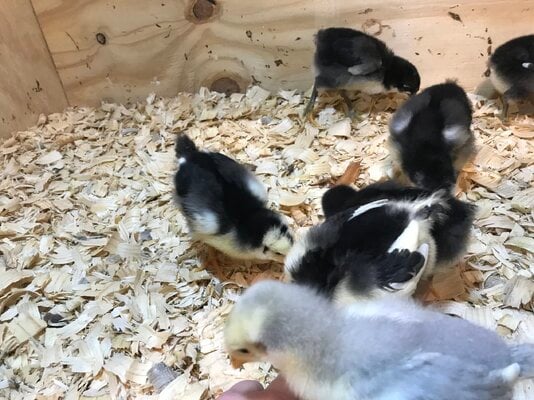 IMG_5455.jpeg525.8 KB · Views: 6
IMG_5455.jpeg525.8 KB · Views: 6 -
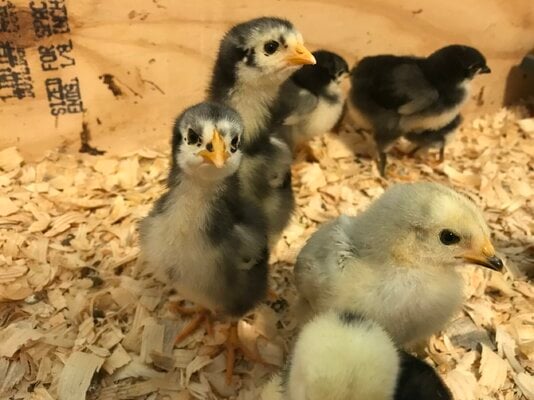 IMG_5450.jpeg352.7 KB · Views: 6
IMG_5450.jpeg352.7 KB · Views: 6
- Thread starter
- #19
Lol I just realized one of the itty bitty babies got in the photo. They aren’t runts; they’re just a week behind the others. I didn’t expect Ms. Broodie to actually hatch more when I let her keep sitting on the eggs that didn’t hatch (it’s been too busy to try breaking her), and I had to pull the chicks to get them food and water. I’ve been keeping a close eye on them, and so far the older ones are doing very well with them.
If the parents had that much white and yellow as chicks, then it must just be a fluke. It's normal for black chicks to have yellow or white bellies and chins, it's just not that common for it to extend up to the top of their heads.I hadn’t even realized that the black and white chicks could be odd. Their parents also had black and white along with the black and yellow (I looked back at last year’s pictures to confirm it). Could the black and white ones be the parents of the lavender/gray chicks? I took some more pics of this year’s chicks, though my camera couldn’t get too accurate with the colors (the chick with an all-yellow head sometimes looks white). I’ll post the pics once they upload.
I don't think it has anything to do the the lavender, they just looked suspiciously like mottled chicks with the white and yellow heads so I'd though you might also want to pay attention to those. Mottling would be another gene that would hide in the parents since it's recessive, but again, if the parents showed the same coloration then I would say it's just individual variation.
New posts New threads Active threads
-
Latest threads
-
Am I crazy, or do these look fertilized?
- Started by LilFinnGirl
- Replies: 1
-
•Difference in Mottled and Splash Birds in any color? •genetics/phenotype question •
- Started by RememberTheWay
- Replies: 2
-
-
Can ivermectin absorb through feathers if you can't apply to skin on a goose?
- Started by Heritagegrovefarm
- Replies: 4
-
-
Threads with more replies in the last 15 days
-
Checking-In On Peeps - Post Here To Say Hello!
- Started by Nifty-Chicken
- Replies: 2K
-
What’s the deal with you chicken people??
- Started by z3lda3
- Replies: 321
-
-
-
-

